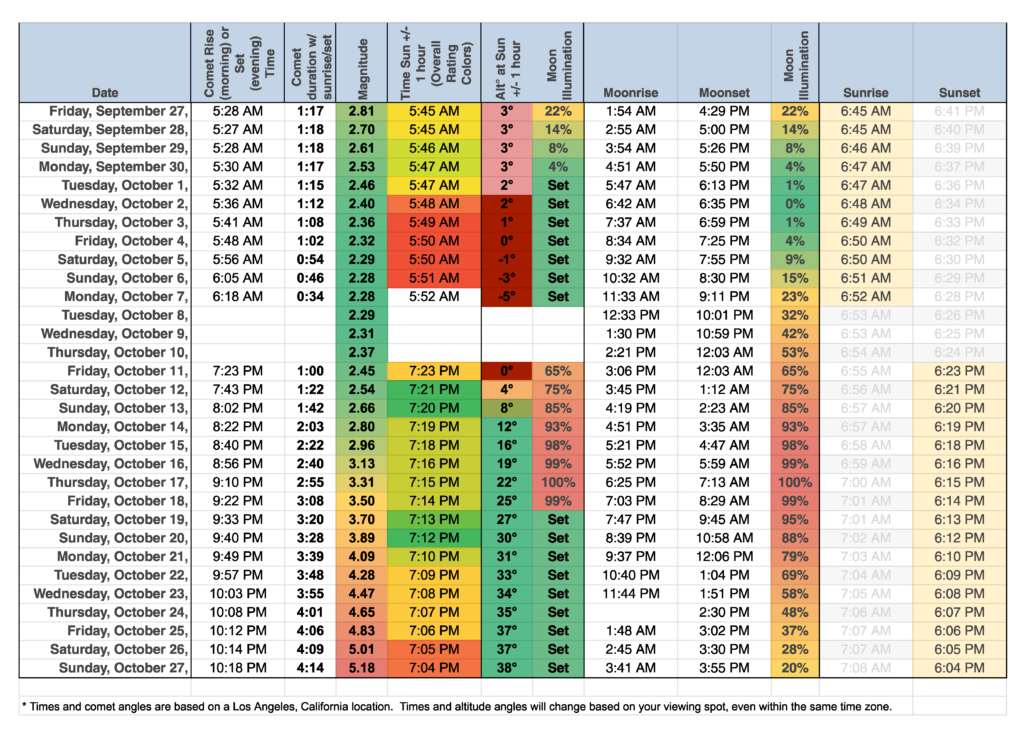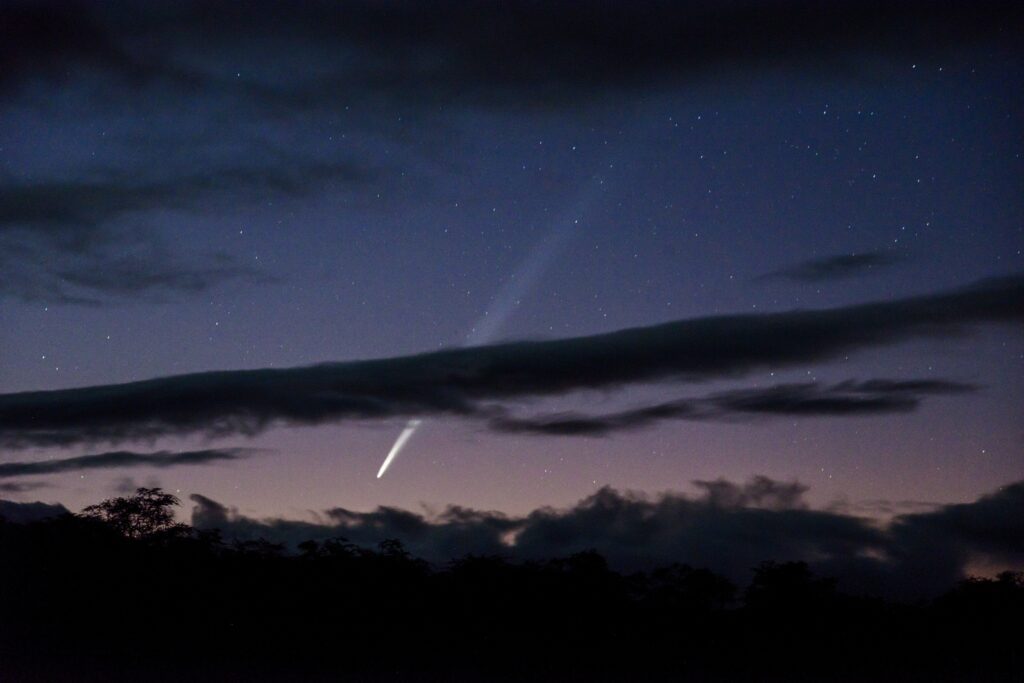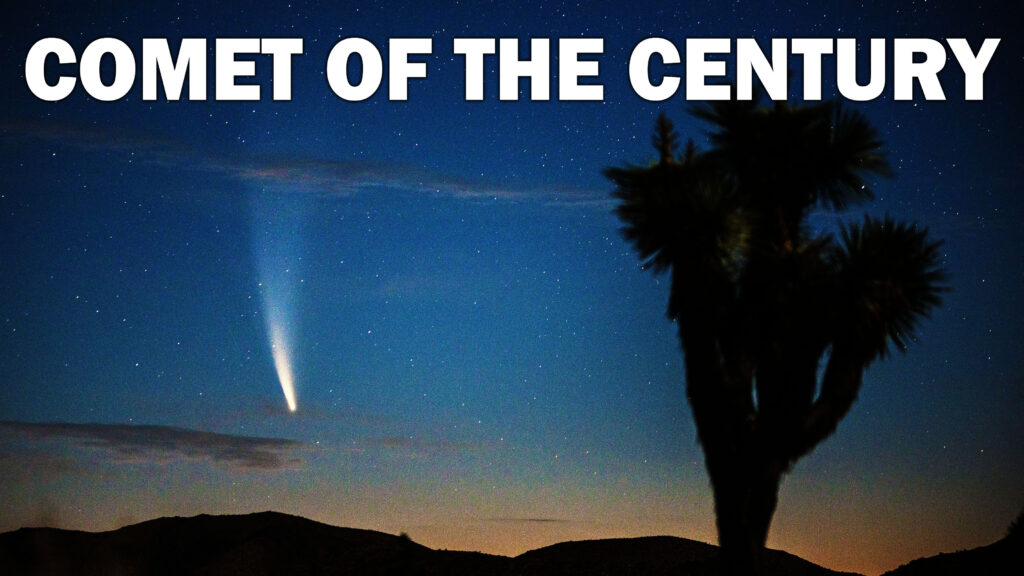Download the presentation in PDF Format with charts, screenshots, and sky maps here.
Get ready, stargazers! This October, a spectacular celestial event is set to light up our skies—a comet known as Tsuchinshan (or as we call it, “Tsuy”) is making its way past Earth, and you won’t want to miss it. In this guide, we’ll cover everything you need to know, from when and where to see the comet, to the best photography tips for capturing this rare event.
Key Dates and Viewing Tips
- Morning Viewing (September 27 – October 3): During these dates, the comet will be visible in the early morning just before sunrise. Look to the east, low on the horizon. Be quick, though—the sun rises fast and will soon wash out the comet’s glow.
- Invisible Period (October 7 – 10): The comet will be positioned directly between the Earth and the Sun, making it impossible to see during this time.
- Evening Viewing (October 11 – 13): The comet will reappear in the evening sky. These dates are expected to be Tsuy’s peak brightness days, as it makes its closest approach to Earth. However, it will be low in the sky, and viewing might be challenging due to twilight light.
- Balanced Viewing (October 14 – 17): The comet will be higher in the sky during this period, and the visibility will improve even as it begins to dim. Unfortunately, the moon will be quite bright, which may interfere with viewing.
- Best Evenings for Moonless Viewing (October 18 – 19): The moon finally moves out of the way, providing darker skies ideal for spotting the comet. The tail could extend up to 20 degrees wide, making these days perfect for photography.
- End of Naked-Eye Visibility (October 20 – November): By late October, the comet will become a binocular object as it continues to fade.

Viewing Tips
- Dark Skies: Even though Tsuy may be visible from suburban areas at its peak brightness, the darker your location, the better. Check out dark sky maps to find the best spots near you.
- Unobstructed Horizon: Find a place with a clear view of the horizon, especially for the early morning and evening views when the comet will be low in the sky.
- Weather Forecasts: Use tools like Clear Dark Sky to get hour-by-hour cloud forecasts to ensure the skies will be clear for viewing.
Top Viewing Locations in Southern California
For those in Southern California, here are some prime locations for comet viewing:
- Joshua Tree National Park: Offers both morning and evening views. Keys View road provides a great easterly perspective, but expect crowds at Keys View Point for westerly views at sunset.
- Cerro Noroeste Mountain: Located north of LA in the Grapevine, this peak provides excellent westward views for evening sightings.
- Anza-Borrego Desert State Park: Known for its dark skies and scenic views, this location is ideal for comet spotting and photography.
Photography Tips
To capture the comet at its best, follow these photography tips:
- Use a Manual Camera: Equip it with a telephoto lens (70-200mm) and set it on a tripod with a remote shutter release to avoid camera shake.
- Adjust Settings: Start with an ISO of at least 800, a wide aperture (f/2 – f/4), and apply the Rule of 500 for shutter speed (e.g., 5 seconds for a 100mm lens) to avoid star trails.
- Focus Tips: Instead of using the infinity setting, fine-tune focus on a bright star or planet. If possible, pre-focus the night before and mark your focus ring with tape.
- Smartphone Users: Use a tripod or secure your phone with a selfie stick. Set your camera app to night mode for longer exposures.
With a bit of planning, you can make the most of this comet’s appearance and even capture some stunning photos to remember it by. So grab your gear, find a dark spot, and get ready for a cosmic show this October! Don’t forget to share your comet photos with us and let us know your own tips and experiences.
Happy comet hunting!
Comet Tsuchinshan photo details
Comet Tsuchinshan from Hula, Hawaii on the shore of La Perouse bay looking over a Haleakala ridgeline on September 29, 2024 5:15 AM. Shot with a Nikon D800, 100mm, f/5.3, 8.9 sec, ISO 6400


One response to “The ULTIMATE Tsuchinshan-ATLAS C/2023 A3 Comet Guide. How to prepare and find the comet of the century.”
Hi, this is a comment.
To get started with moderating, editing, and deleting comments, please visit the Comments screen in the dashboard.
Commenter avatars come from Gravatar.